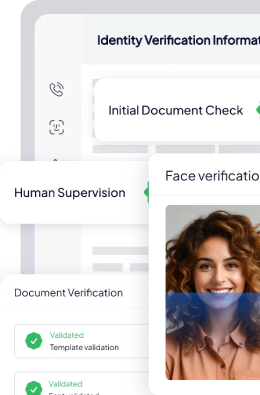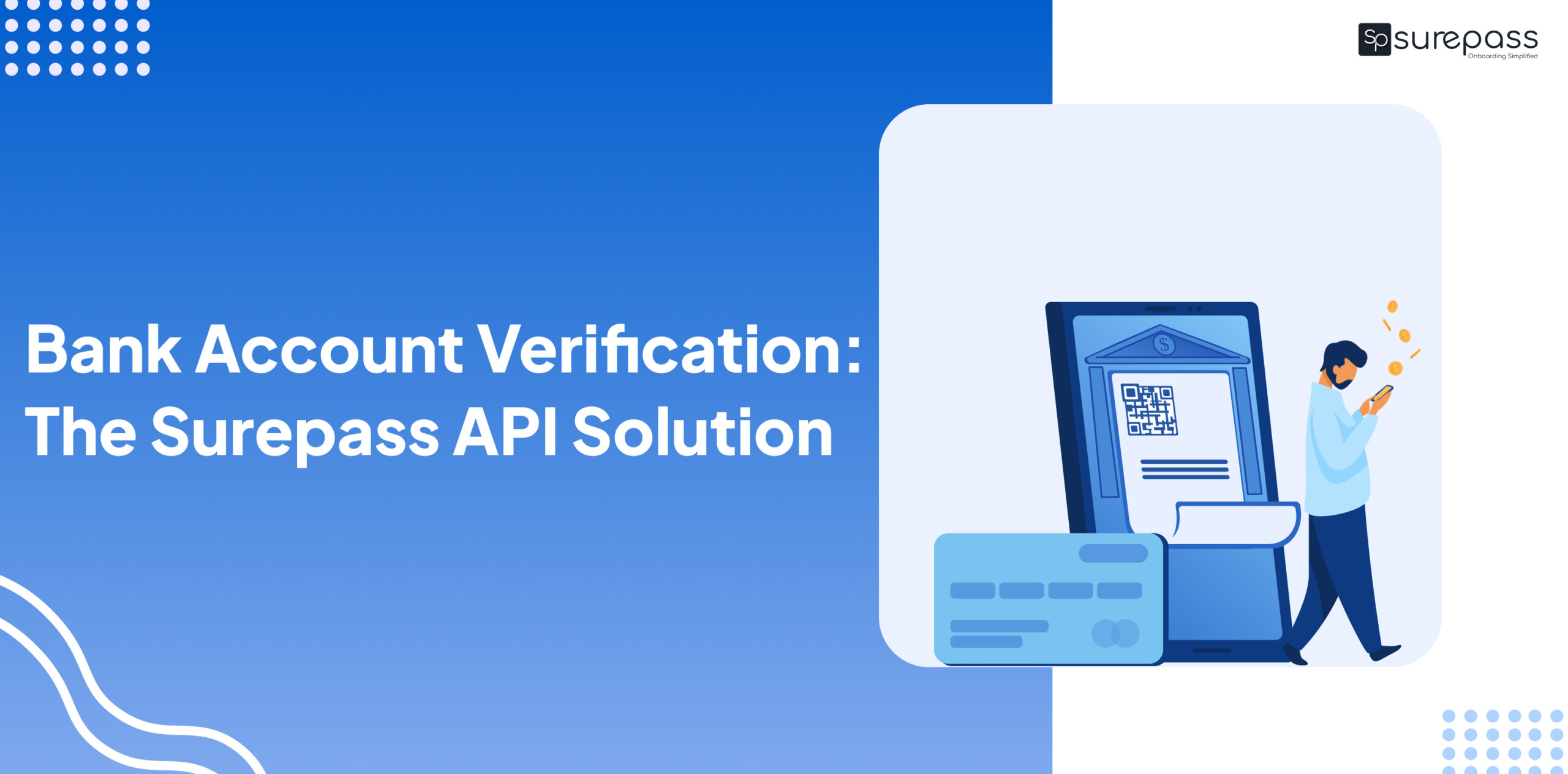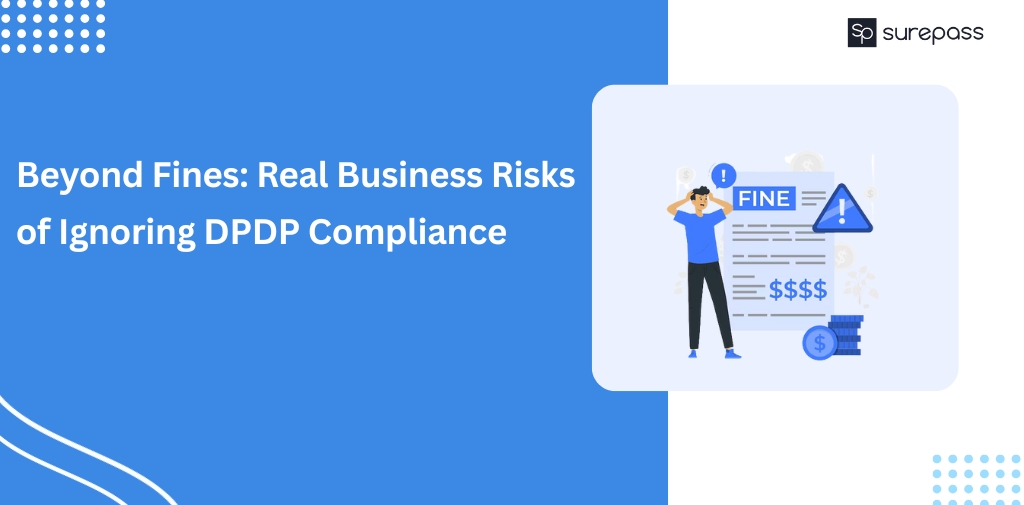Bank Account Verification API
The Bank Account Verification API makes it easy and trustworthy to confirm the legality of a bank account. By doing this, it will be possible to halt any fraudulent behaviour and confirm the validity of the consumer.
Most regulatory bodies advise certain institutions and companies to utilize online bank account verification API services to validate the validity of the account and the dependability of their clients. For this procedure, all that is required are the customer’s selected credentials.
The API for bank account verification is very easy to use. The following stages are involved in the process.
- Add the customer’s bank account number as well as the IFSC code.
- The banking information system receives information to confirm the account data.
- Available for transactions are instantly validated bank accounts.
Loans are disbursed promptly using the bank account verification API technique. Easily transfer a little loan to the necessary, functional bank account.
When rewards are issued to confirmed accounts, it also helps to spot fake accounts and eliminate human mistakes. Last but not least, a company that offers online gaming may assist a player in expediting the payment procedure after their bank account has been verified.
Bank Account Verification
Businesses can cross-check the legitimacy of bank accounts through the process of bank account verification. This is a step in the customer due diligence (CDD) process that businesses must do to stop identity theft and financial crime.
Apart from risk reduction, KYC data administration is streamlined and documentation mistakes are reduced thanks to bank account verification. With the development of technologies like bank account verification APIs, penny drop verification, third-party verification techniques, and many more, there are several ways and procedures via which the process may be carried out.
The necessity for banks and other financial institutions (FIs) to verify bank accounts is a recurring theme.
Automate your KYC Process & reduce Fraud!
We have helped 1000+ companies in reducing their user onboarding TAT by 95%
Bank Verification- Steps Involved
Bank verification covers a range of procedures, but lately, it has become more prevalent to include digital procedures. A business would need the following details in order to do bank account verification:
- Name of the account holder
- Routing Number
- Bank Account Number
Authentic information proving ownership of a bank account must normally be provided by the prospective client in order to verify their bank account. A bank statement is an illustration of such reliable or accurate information. A consumer may occasionally establish their identification by supplying information that is in agreement with information stored by the bank they have an account with or on file with a credit agency. Verifying a bank account uses the following techniques:
- Confirming the potential customer’s identity
This entails proving the identification of the account holder. These techniques may be used to do this throughout the client onboarding process:
- Personal Account Verification at a Bank
When opening a new account, the prospective client must be physically present. To evaluate the account holder or potential customer, a representative will be on-site. The identification, address, and copy of the ID card or passport will all be checked as needed. They will be evaluated to make sure they pose no dangers for engaging in malevolent behavior, and it will be confirmed whether they are on any lists of suspects or wanted individuals. Once all, an account has been formed once they have been authenticated or certified as legitimate.
- Bank Account Verification Online
With the spread of digital processes into many facets of modern life, this encompasses digital onboarding and has grown fairly popular. Online verification service providers like Surepass make this feasible. In essence, neither the user nor the potential client has to be physically present nor be evaluated by a physical agent.
Through an entirely digital and automated registration and identification process, the verification and account opening are carried out online. They must validate their identification documents, such as passports, ID cards, evidence of identity, and proof of life, as part of the procedure.
Businesses can fully automate the bank account verification process with Surepass for more thorough compliance and simpler customer onboarding. Today, ask for a demo to see how it functions.
- Micro deposits
This procedure entails the consumer providing the merchant with their account information. The merchant transfers modest sums of money to the customer’s account to confirm the legitimacy and ownership of the account number.
- Checks for Credit
Credit checks compare a customer’s account information to data stored on file at a credit agency. The account is validated when the information matches.
- Using Open Banking
Open banking services are a fantastic tool for verifying a bank account. You may provide your users a selection of banks to pick from after connecting to an Account Information Service Provider (AISP), after which they can link their accounts. That’s all; you now have access to the bank account details and most recent statements.
Need for Bank Account Verification
Verifying bank accounts is a crucial step in the Know Your Customer and (AML) Anti Money Laundering Processes. The need for bank account verification is due to a number of factors, though.
- Maintains the Company’s Reputation:
Customers are given the assurance that their information is secure since a corporation is concerned about security. Additionally, it might support a company’s image as a trustworthy one.
- Assists In Reducing Or Preventing Human Error
Bank account verification lessens human mistakes that might result from entering inaccurate account information or using one person’s account number for another. Additionally, it spares the administrative staff the stress and tiresome effort of tracking down and correcting errors that can occur as a result of the usage of invalid account numbers or incorrect charges.
- Regulatory requirements must be met
The KYC and AML criteria must be met by businesses and financial institutions. Bank account verification protects businesses against a wide range of risky scenarios that may be related to non-compliance, which may result in significant financial and reputational losses for businesses.
- Maintains the Company’s Reputation
Customers are given the assurance that their information is secure since a corporation is concerned about security. Additionally, it might support a company’s image as a trustworthy one.
- Saves Money And Time
Since a secure data source and information are used, client information is not manually entered. Both money and time are saved. There are fewer mistakes made and fewer staff members are required to onboard consumers.
Bank Account Verification with Surepass
Simply click a couple of times to check bank accounts before sending any money with Surepass. With the help of our strong API interface, you can secure and simplify the bank verification procedure. By validating bank accounts seamlessly, rules are adhered to, risks are reduced, and customer experiences are improved.
You may check account ownership, account status, IFSC code, and carry out real-time bank validations with our bank account number verification API. With Surepass’s Bank Account Verification API, you can increase operational effectiveness, lower fraud, and streamline customer onboarding. Put your faith in our dependable solution to simplify your verification procedures and improve the whole client experience.





